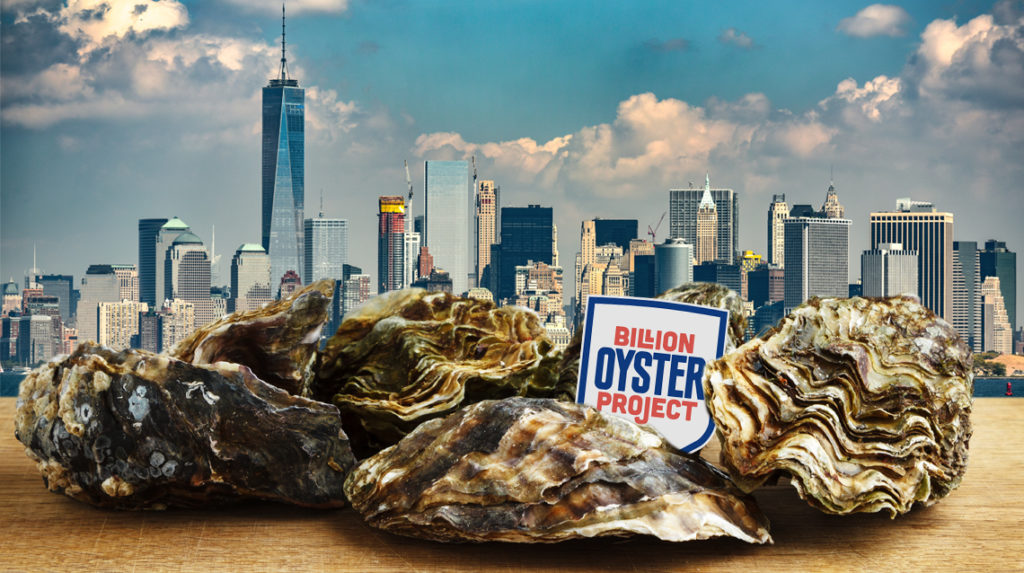Can a billion oysters clean up New York Harbor?
New York Harbor was once a rich, diverse, and abundant estuary. Now polluted and dirty, it is at the center of a project that aims to restore it back to its former glory by restoring one billion oysters to the area.
Oyster beds bring life back to New York Waterways
New York Harbor was once a rich, diverse, and abundant estuary. Now polluted and dirty, it is at the center of a project that aims to restore it back to its former glory. How will this be done? Oysters, and a lot of them. The Billion Oyster Project plans to use regenerative design principles, a process which aims to leave a net positive impact on natural systems, to restore oyster reefs to the harbor and provide habitat, filter the water, and protect the city from storm damage and flooding events.
The regenerative design principle
The Billion Oyster Project is part of a growing movement towards regenerative design. No longer is it sufficient to just use the minimum amount of resources necessary, a principle of sustainable design; regenerative design is about ensuring the building or project has a net positive impact on natural systems. It looks to expand human architecture beyond our needs as humans, and build structures that address the wider global ecosystem needs for all species. Part of the reason for this is the growing understanding of the challenges posed by climate change – more extreme weather patterns and less stability – which has led to the idea of how it is better to ‘design with nature’ than attempt to fight it. Examples of this elsewhere include green roofs and skins on buildings for insulation, restoring rivers to their original form for flood defense, and permaculture farming.
Small shells, huge impacts
New York isn’t the only city receiving the oyster treatment – similar initiatives are taking place all across the United States. 50 years after the passage of the Clean Water Act, urban waterways are still struggling, but are finally showing signs of life. Scientists are looking ever more towards aquatic plants and bivalves like oysters and mussels to help restore these fragile ecosystems and clean up rivers and lakes. Oysters and aquatic vegetation have long had a positive impact on the surrounding waters. Danielle Kreeger, science director at the partnership for the Delaware Estuary south of Philadelphia says, “Why not take the functional advantage of plants and animals that are naturally resilient and rebuild them? Then you get erosion control, water quality benefits, fish and wildlife habitat, as well as better access for people.”
Like coral reefs, oyster beds provide habitat for potentially hundreds of species. As the bivalves grow off one another they create a reef structure that other organisms can settle on. Oysters eat by filtering particles out of the water, which they do with tremendous efficiency. A single oyster can filter up to 150 liters of water in a day, pulling out pollutants, waste, and suspended particles. This improves water clarity and helps cycle nutrients for use by other organisms.
As Tanner Council, of the Chesapeake Oyster Alliance explains, “the more oysters we have in the water, the healthier the water’s going to be.” The Chesapeake Oyster Alliance is a coalition funded by the Chesapeake Bay Foundation that is committed to adding not just one, but ten billion new oysters to the bay by 2025.
But oyster reef systems also offer defense against floods and storm damage. Once upon a time, massive oyster reefs in New York Harbor softened the blows of large waves and prevented erosion. The Billion Oyster Project, alongside the Living Breakwaters Project, is intending to bring these systems back.
Across oceans, oysters continue their work
It isn’t just in the USA where oysters are being used to regenerate and protect city waterways – over the next five years, a Sydney Institute of Marine Science team will work to restore reefs around the Australian city and bring back the lost native species – the Angasi. As in New York, before the urbanization of the area the harbor was full of oyster reefs. Early European colonists had to navigate around these reefs, and oyster shells were used in the mortar that makes up some of Sydney’s oldest buildings. Today, most of Sydney’s oyster reefs have been wiped out by fishing and industry. With a focus on regenerative design, Sydney, New York, and many other cities’ waterways could soon be cleaner and healthier, thanks to an abundance of oysters.

Photos : nsta.org and billionoysterproject.org
















There are no comments
Add yours